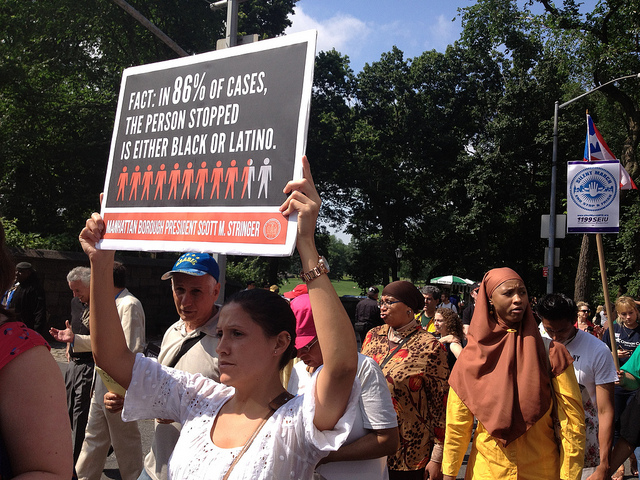
(LongIslandWins)
By David Boswell
In August 2013, Judge Shira A. Scheindlin of the United States Southern District of New York ruled stop and frisk unconstitutional, saying it violated Fourth Amendment rights. Mayor Michael Bloomberg responded by appealing her decision. Recently, Judge Scheindlin was removed from the case, postponing the court’s decision until March of 2014.
With Mayor-elect Bill De Blasio coming into office in January 2014, it’s safe to say some modifications in the stop and frisk policy are on the way. In May of 2013, the Public Advocate’s office released a report on the controversial practice, “Stop and Frisk and the Urgent Need for Meaningful Reforms.” which said, “The NYPD’s stop-and-frisk tactics show a pattern of profiling not only in the frequency with which minorities are stopped—but in the quality of those stops as well.”
During his campaign, Mayor-elect Bill De Blasio said he believed that the policy is unfair and that he plans on revamping it. “I say clearly, that we need to look this in the face,” said de Blasio. “In the recent years, we’ve had two approaches to policing, separate and unequal depending on which neighborhood you lived in.”

Police Commissioner Ray Kelly disagreed and said that crime has been reduced because of the policy.
“We’re at the lowest number of murders in October 31, 2013, probably the lowest it’s been since October 31 in the 1940s,” said Kelly. “So, that’s how safe the city is and our tactics and strategies have worked.”
According to Ray Kelly there is not bias in the stop and frisk policy. “We have done a lot to make certain the implementation of this practice is done fairly and according to the law,” said Kelly.
At a recent rally against police brutality, criminal attorney Mark Taylor said he found a number of aspects of the stop and frisk policy particularly disturbing.
“One of the things that I think has led to some of the trouble has been the quota system that has been used by the police department,” said Taylor. “Reasonable suspicious used to have real meaning. It loses its meaning when an officer is told to go out there and find 10 people that are suspicious.”
At the rally, attendees displayed paintings with slain minorities. One was Gregory Jarvis. His mother Darnette Jarvis was at the rally. She said suggested that the police themselves need more policing.
“Well, one of the things the judge ordered was that the precincts with the highest rate of stop and frisks were ordered to wear cameras on their person while they do their official duties,” she said. “I think that’s a legitimate order because they cannot be trusted to do their duties in the confines of the law.”
Criminal attorney Ray Zager says evaluating the legality of stop and frisk is complicated.
“The Fourth Amendment prohibits unreasonable searches and seizures,” he said. “It’s technically a seizure for a police officer to stop someone that has an automatic rifle in his hand, that’s black and white. But, then you have the grey area.”
Stop and frisk is a search and seizure, but is it unreasonable? Zager says it has to do with what the public considers reasonable. “How much are you willing to trade for your personal security?” he asked.
Mark Perez, a Hispanic New Yorker at the rally, said the price was too high.
“It’s completely disempowering and emasculating for another man to put his hands on you and know that there is nothing you can do to physically defend yourself,” he said. “It’s an emasculating position to be in.”
On November 22nd, an appeals court denied the efforts to reverse Judge Scheindlin’s order to change stop and frisk. As 2014 nears, the question remains: Is there a compromise that can be reached by law enforcement and opponents of the policy? We might find out in the year to come.




